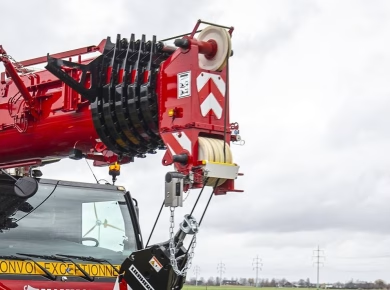The first time I walked into a property labeled as “affordable,” I felt a spark of excitement mixed with skepticism. The price was enticing, but as I stepped through the door, that initial thrill quickly morphed into disappointment. Peeling paint, outdated plumbing, and an unmistakable mustiness filled the air. It became glaringly clear that in the realm of real estate, “affordable” often equates to “unlivable.” This reality can be a bitter pill to swallow for both investors and future homeowners, who may find themselves trapped in a cycle of high repair costs and unforeseen issues. Understanding the true implications of affordability in real estate is essential for anyone looking to make a sound investment.
The Allure of Affordability
Affordable properties can feel like a golden opportunity, especially for first-time buyers or investors looking to break into the market. The allure lies in the promise of lower monthly payments and the hope of high returns if the property appreciates. However, it’s crucial to approach these listings with a discerning eye.
Assessing the True Cost
The first step in evaluating an “affordable” property involves a thorough cost analysis. Beyond the sticker price, consider the potential expenses that could arise. Properties in this category often require significant repairs or upgrades. It’s not uncommon to see a price tag that seems like a steal, only to discover that the foundation is crumbling or the electrical system is outdated.
For example, a two-bedroom condo in a promising neighborhood might be listed at a fraction of the average market value. However, upon inspection, it becomes evident that the roof needs replacing and the plumbing is on its last legs. These hidden costs can quickly turn a “bargain” into a financial burden.
The Importance of Due Diligence
Due diligence is your best ally when navigating the realm of affordable properties. Conducting a comprehensive inspection isn’t just a recommendation—it’s a necessity.
Bringing in Professionals
Hiring professionals such as home inspectors and contractors can reveal issues that aren’t visible to the untrained eye. They can provide insight into the scope of repairs needed and help you estimate the costs involved. A thorough inspection can save you from making a costly mistake that could haunt you for years.
For instance, during my own property search, I encountered a charming bungalow priced well below market value. It wasn’t until the inspector uncovered significant mold in the basement that I realized how deceptive the price tag could be. The repair costs were projected to be staggering, prompting me to walk away from what seemed like a great deal.
Location: A Double-Edged Sword
Location plays a pivotal role in real estate value, and it’s essential to understand that affordability often comes with trade-offs.
Neighborhood Dynamics
Properties in less desirable neighborhoods tend to have lower price points, but this can lead to challenges down the line. High crime rates, poor school districts, and a lack of amenities can hinder property appreciation and make resale difficult.
Conversely, a property in a bustling area with good schools and low crime may come with a higher price tag, but it can also present a more stable investment. Balancing location and price is key. As an investor, consider not just the current market, but also potential future developments in the area that could influence property values.
Understanding Market Trends
Staying informed about market trends is crucial for making wise investment decisions. Affordable properties can sometimes indicate a downturn in the neighborhood or broader market.
Long-Term Viability
Before committing to an “affordable” property, analyze the long-term viability of the area. Are there signs of growth, such as new businesses opening or infrastructure improvements? Or is the neighborhood declining? For example, I once invested in a property that was slightly above the “affordable” threshold in an up-and-coming area. Within a few years, the neighborhood blossomed with new restaurants and shops, significantly increasing my property’s value.
Understanding these trends can provide invaluable context when assessing whether a property is truly worth the investment.
Negotiating with Knowledge
Once you’ve identified a property you’re interested in, it’s time to negotiate. Knowledge is power in this phase; understanding the true costs and potential issues allows you to negotiate more effectively.
Highlighting Flaws
When discussing the price with the seller, don’t hesitate to bring up any flaws discovered during inspections. Use this information to your advantage. A well-informed buyer can negotiate a better deal, potentially saving thousands in the process.
For example, after uncovering several significant repairs needed in a listing, I was able to negotiate a price reduction that accounted for the expected costs. This not only made the investment more viable but also provided a buffer for future renovations.
Final Thoughts: Striving for Balance
Navigating the world of affordable real estate requires a balance of optimism and realism. While the prospect of finding a bargain is enticing, it’s essential to approach these opportunities with a critical mindset. Conduct thorough inspections, understand the local market, and be prepared for negotiations.
Ultimately, the goal is to find a property that not only fits your budget but also stands the test of time. Real estate is not just a financial investment; it’s a place where lives are lived and memories are made. By ensuring that “affordable” doesn’t mean “unlivable,” you pave the way for a successful and fulfilling investment journey.





